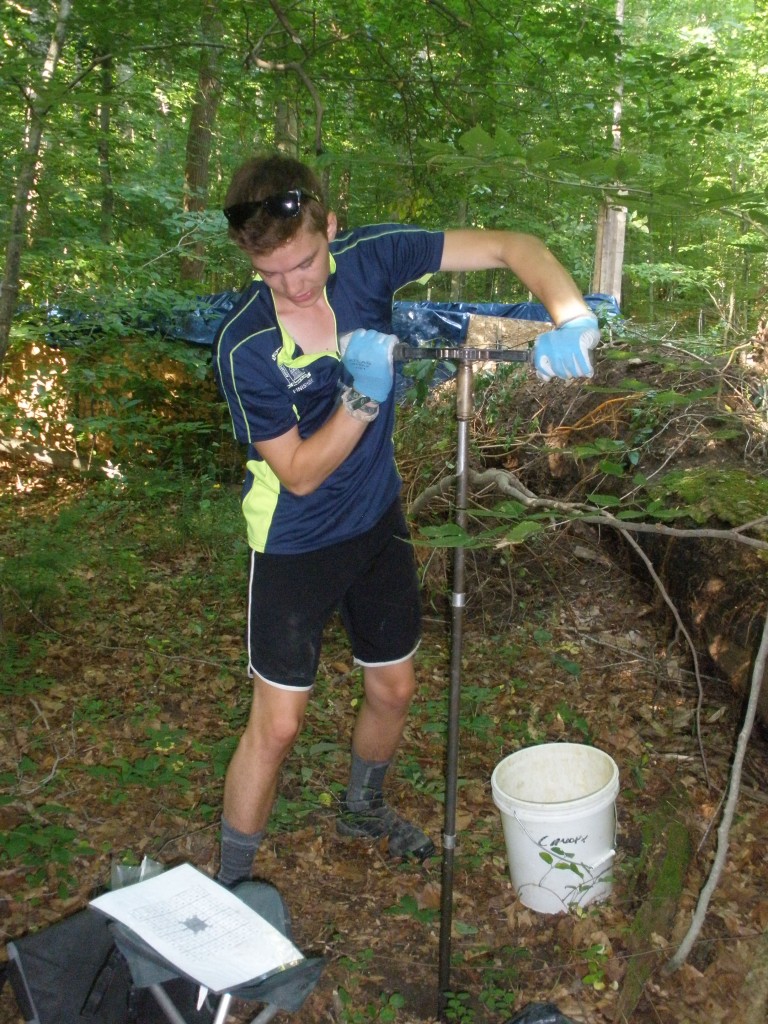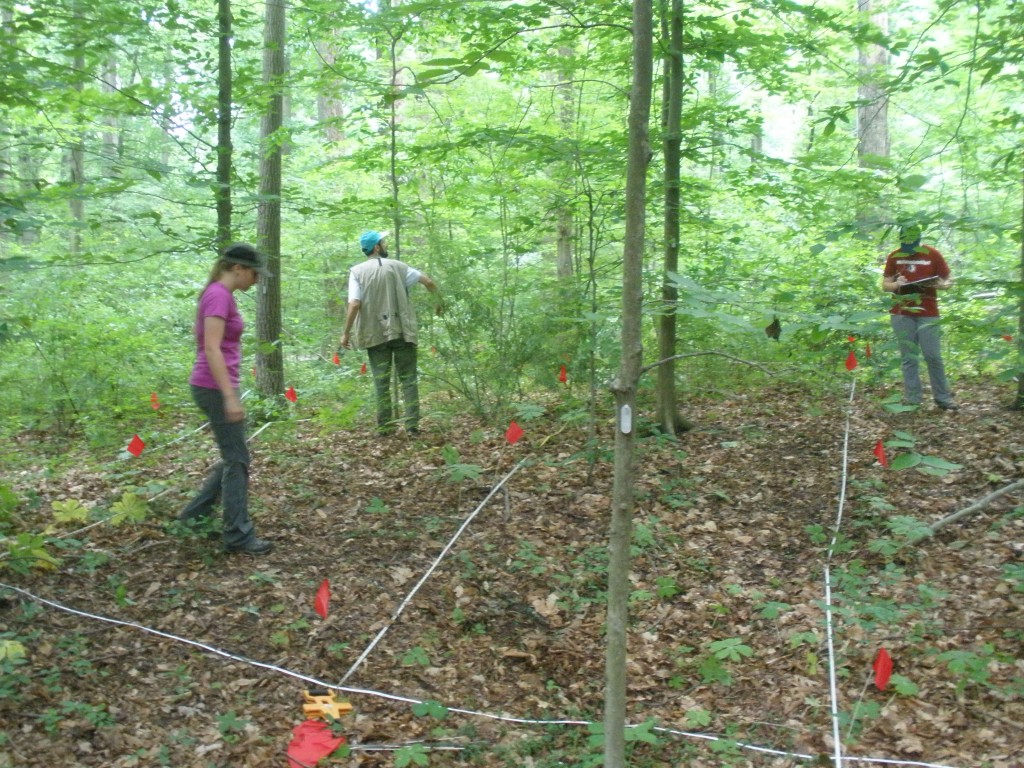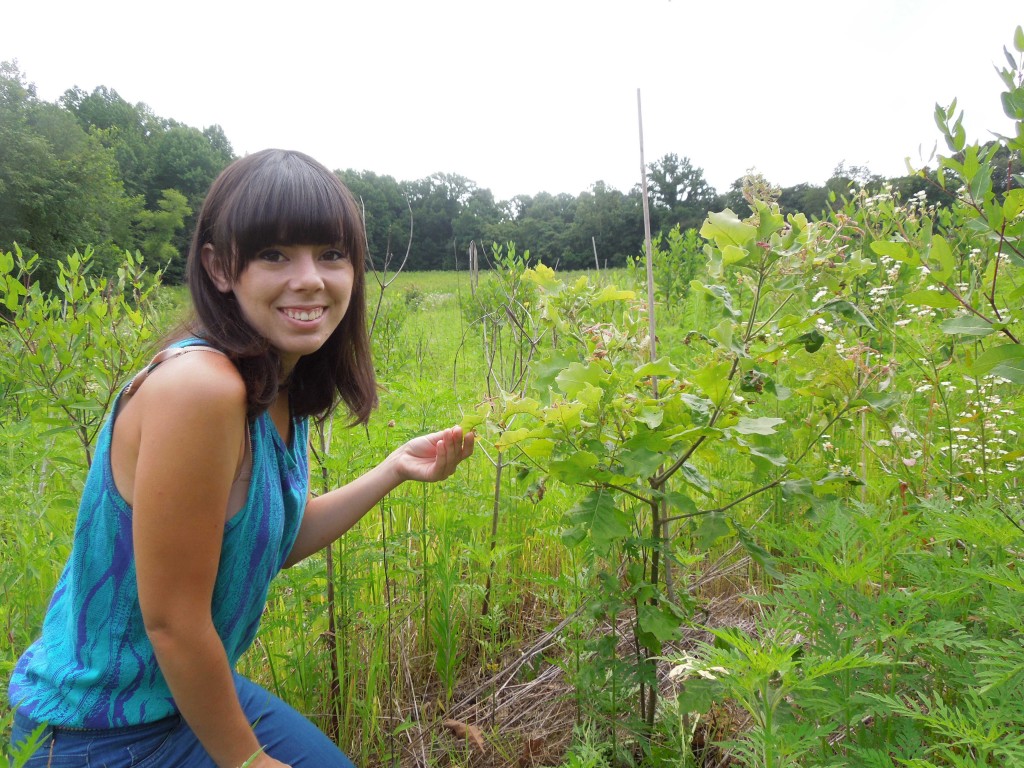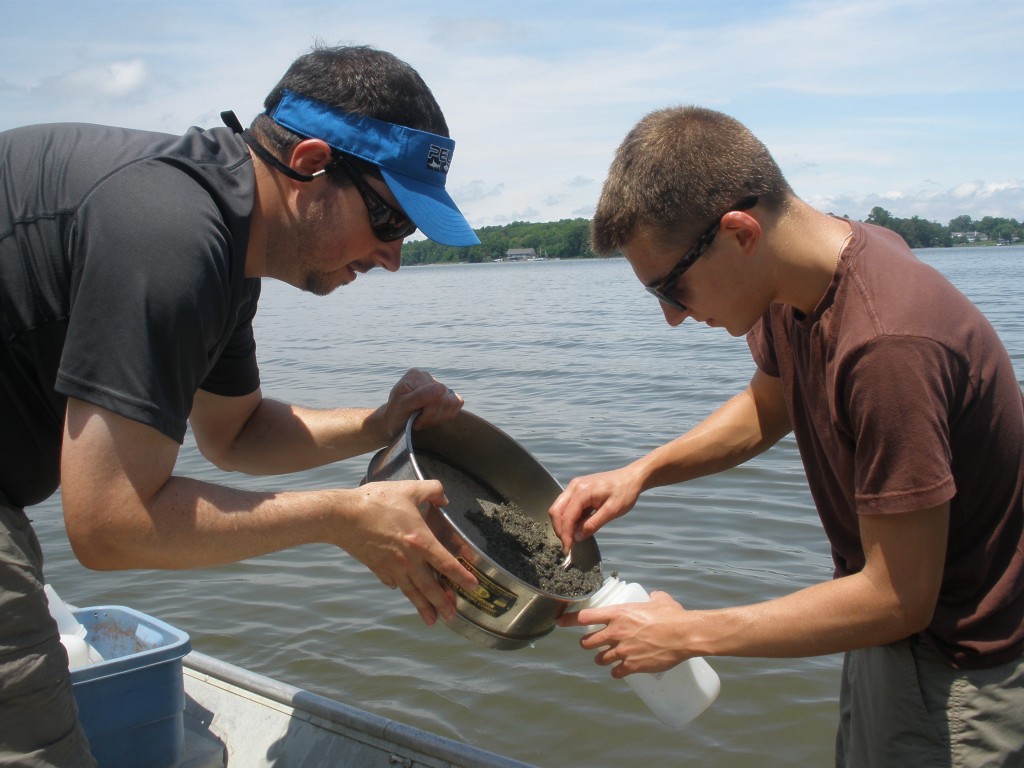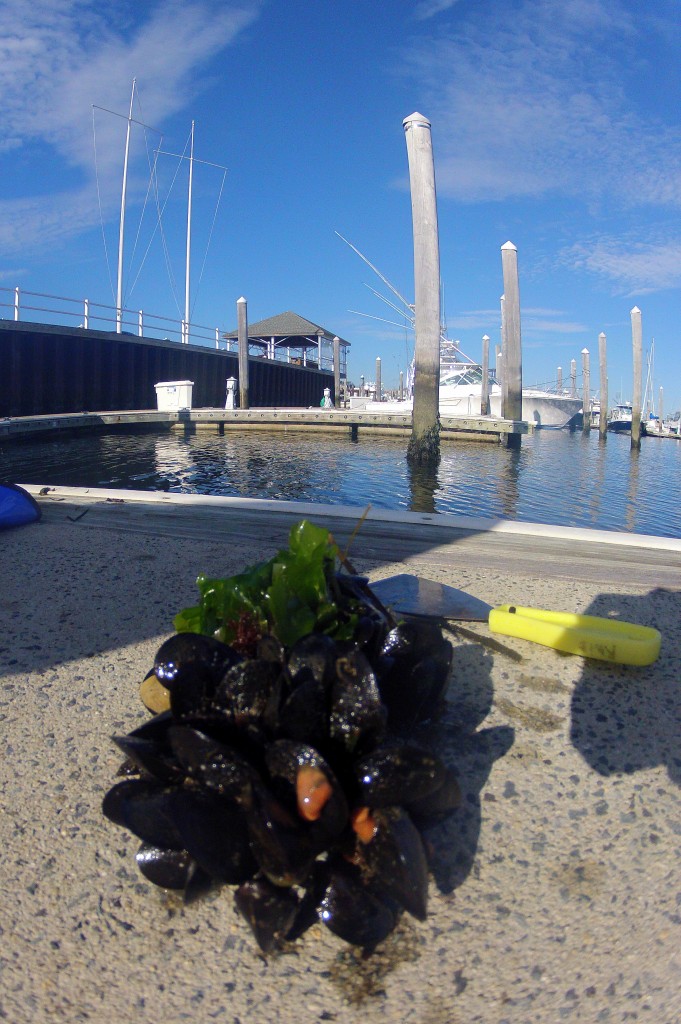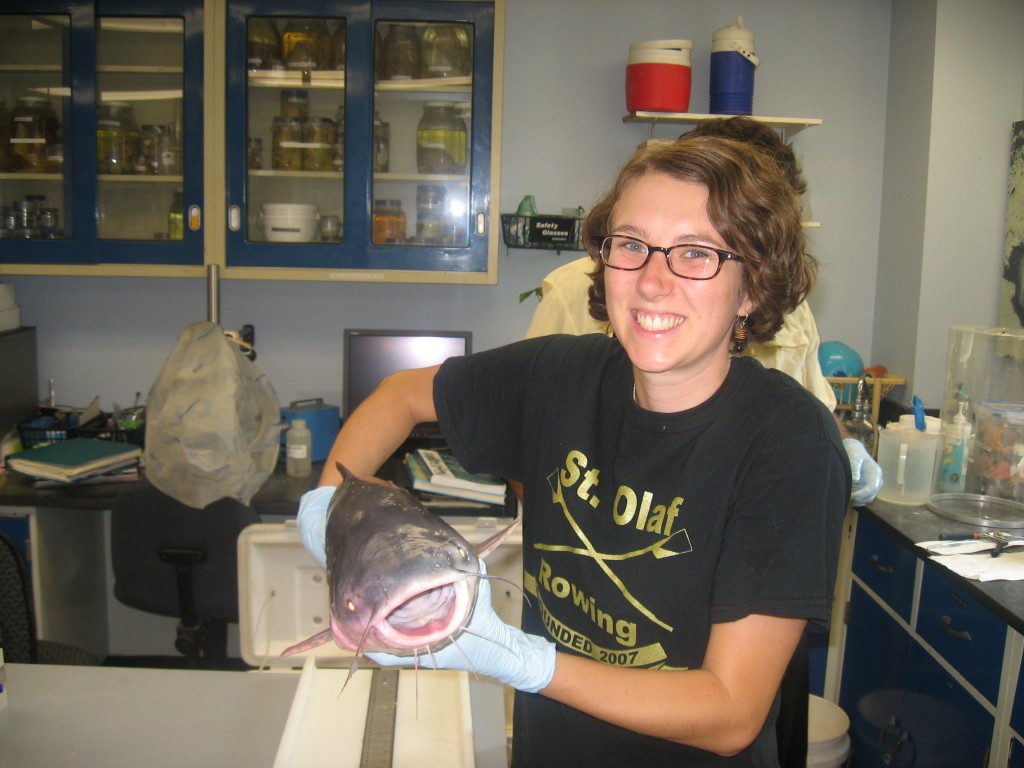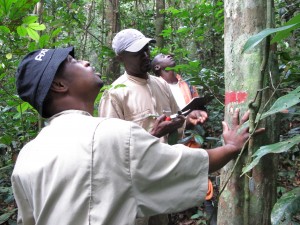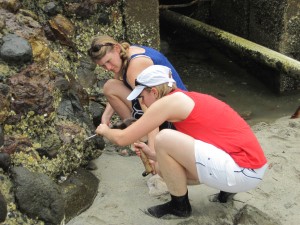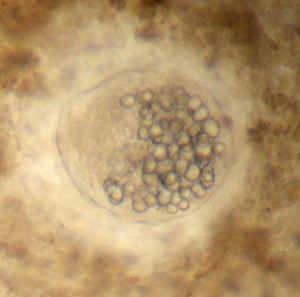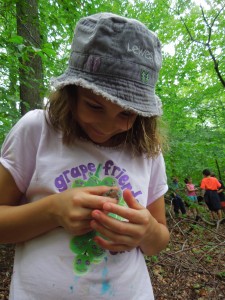By Katie Sinclair
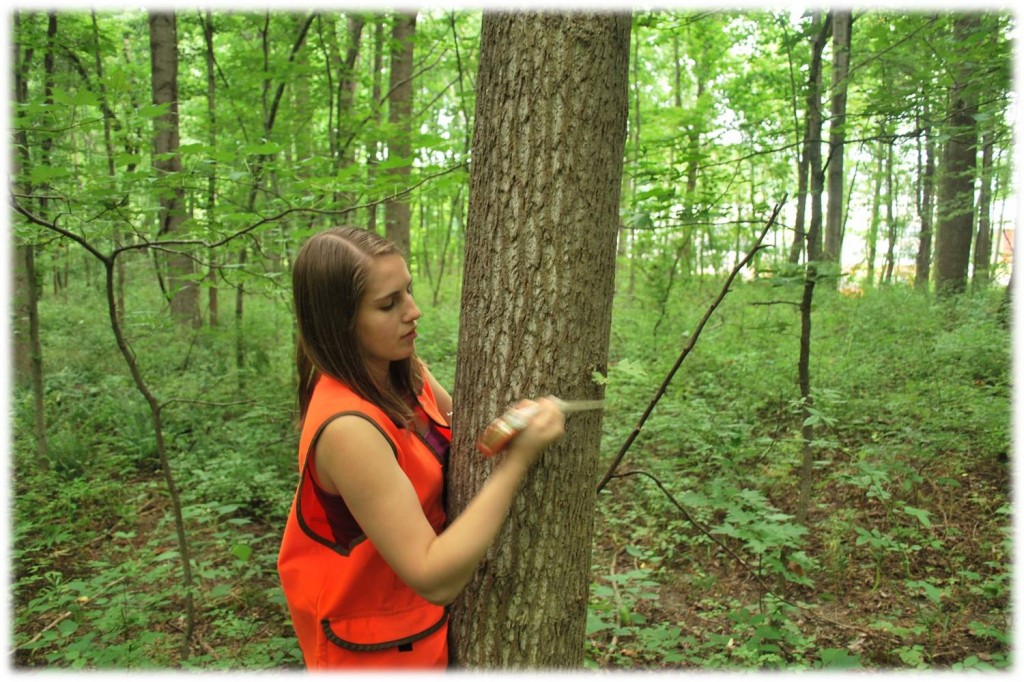
Intern Hope Zabronsky measures the diameter of a tree to see how logging affects biomass regeneration
Summer is almost over, which means intern season is coming to a close. Over 20 interns from universities across the United States have spent their summers here at SERC, studying everything from phytoplankton to Phragmites. Several interns chose to take on the challenge of climate change, exploring how trees will affect rising levels of greenhouse gases.
Mysterious Methane
Although methane emissions worldwide are much lower than CO2 emissions, a little methane goes a long way: Methane is 25 times as powerful a greenhouse gas as CO2. While we have an idea of what the sources of methane are, researchers face difficulties when trying to model methane emissions. The biggest discrepancy is between “top-down” and “bottom-up” models. Top-down approaches use satellite imagery to track the amount of methane in the atmosphere, while bottom-up methods look at the amount of methane emitted from the soil.
The Biogeochemistry Lab wants to see if methane is coming from sources other than the soil. Marsh grasses are known to emit methane, but no research has yet been done on trees. Figuring out if and how much methane is emitted can help determine whether methane projections are accurate. The Biogeochemistry Lab has set up two experimental sites to study methane, and is working on establishing a third.
Intern Kyle King worked on methane emissions this summer. He attached airtight chambers to trees, and measured the gas concentrations at different heights along the tree. He found that trees did emit methane, in some cases more than microbes in the soil. Methane emissions were highest near the roots and less at higher trunk heights. He also found that larger trees emitted much more methane than smaller ones.
The exact mechanism of how trees release methane is not yet understood. Two possibilities are methane diffusing out of the water that is taken in by the plants’ roots, or microbes inside the tree producing methane. But whatever the cause, understanding where methane comes from will be vital when trying to predict the impact of climate change.
Click to continue »
